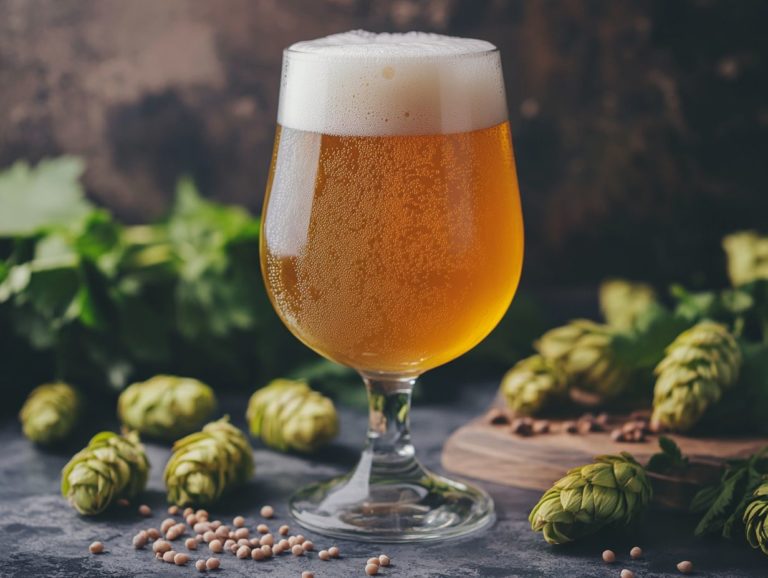Can I Use Extracts Instead of Grains?
Are you intrigued by the rising trend of using extracts and flours in place of traditional grains for your cooking and baking endeavors, similar to the extract brewing methods used in homebrewing? This article delves into the fascinating world of extracts, illuminating how they differ from conventional grains and outlining the various advantages and disadvantages of using them as substitutes. You ll discover common extracts that can elevate your meals, along with expert tips for baking and brewing techniques.
You ll also discover the potential health benefits these ingredients offer, including their effects on blood sugar levels and weight management, similar to the benefits found in extract beers produced by novice homebrewers and commercial breweries. Get ready to transform your culinary adventures!
Contents
- Key Takeaways:
- What Are Extracts and Grains in Brewing and Cooking?
- What is the Difference Between Extracts and Grains?
- Can Extracts Be Used Instead of Grains in Cooking?
- What Are Some Common Extracts Used in Place of Grains?
- Can Extracts Be Used in Place of Grains in Baking?
- What Are Some Tips for Baking with Extracts Instead of Grains?
- Are There Any Health Benefits to Using Extracts Instead of Grains?
- How Do Extracts Affect Blood Sugar Levels?
- Can Extracts Aid in Weight Loss?
- Are Extracts Gluten-Free?
- Frequently Asked Questions about Extract Brewing
- Can I Use Extracts Instead of Grains in Brewing?
- What are extracts in Brewing?
- Why would I want to use extracts instead of grains in Brewing?
- Can extracts be used in all recipes that call for grains in Brewing?
- Do I need to use the same amount of extract as I would grains in Brewing?
- Are there different types of extracts I can use in Brewing?
Key Takeaways:
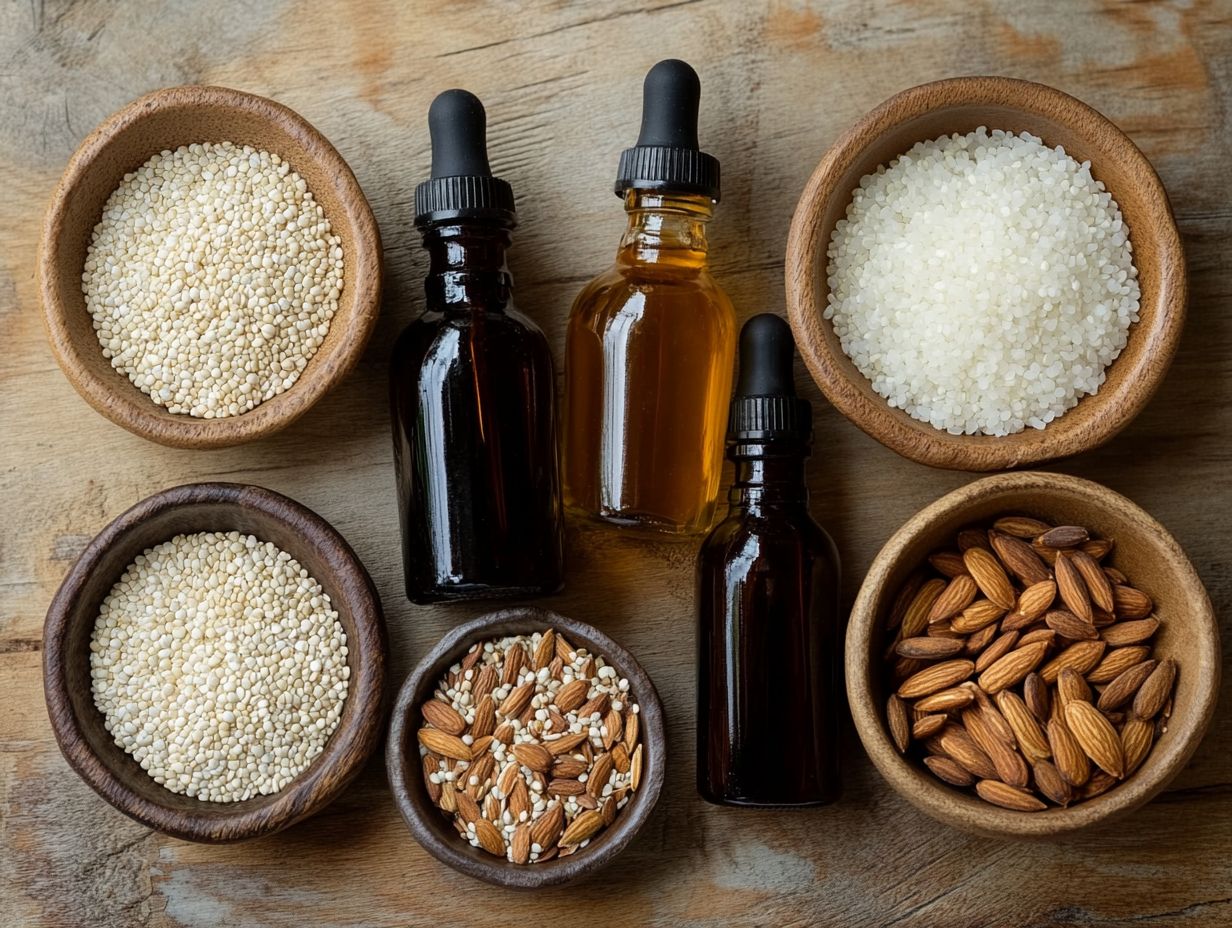
- You can use extracts as a substitute for grains in cooking and baking.
- Using extracts instead of grains can offer health benefits, such as being gluten-free and potentially aiding in weight loss.
- Some common extracts used in place of grains are almond flour, coconut flour, oat flour, cassava flour, and chickpea flour.
What Are Extracts and Grains in Brewing and Cooking?
Extracts and grains hold a vital place in the world of culinary arts and brewing, with malt extract standing out as a key player in the brewing process. These extracts, typically derived from malted barley, are used in both commercial breweries and craft beer production, offering a streamlined approach to brewing that is especially appealing to the homebrewing enthusiast.
Grains supply the essential building blocks for diverse and intricate beer styles. By grasping the differences between extracts and grains, you can elevate your brewing techniques and refine your recipe control, leading to better fermentation outcomes and the creation of award-winning beers often recognized at competitions like the GABF.
What is the Difference Between Extracts and Grains?
The distinction between extracts and grains fundamentally revolves around their form and function within the brewing process, which in turn influences flavor, cost, and the overall complexity of your recipes. This choice affects everything from your hop additions to the fermentability adjustments needed during the brewing process.
Extracts, like liquid malt extract (LME) and dry malt extract (DME), provide a more straightforward brewing experience, making them particularly appealing to those just embarking on their homebrewing journey as well as extract makers looking for brewing simplicity.
On the other hand, grains unlock a world of deeper flavor profiles and intricacies that seasoned brewers and discerning beer enthusiasts truly cherish. This choice significantly affects everything from your ability to control the recipe to the nuanced taste variations in the final brew you produce, offering a richer all-grain brewing experience.
Can Extracts Be Used Instead of Grains in Cooking?
Using extracts instead of grains in your cooking is not only feasible, but it can also streamline your culinary experience, much like the art of brewing in extract systems.
By incorporating extracts such as malt extract or various flours, you can achieve the essential flavor and texture for your recipes, giving you the power to deliver consistent results with high-quality ingredients akin to those used in renowned commercial breweries like Guinness or Chimay.
This versatility becomes especially advantageous when you’re looking to create distinctive dishes or craft unique beers, allowing you to explore and experiment without the intricacies typically tied to traditional grain-based recipes.
In conclusion, experimenting with extracts can open up new culinary possibilities and enhance your brewing skills. Embrace the creativity and potential these ingredients bring to your kitchen and brewing endeavors!
Benefits of Using Extracts Over Grains
Using extracts instead of grains offers numerous benefits, especially for those who value efficiency and consistency in their cooking.
Extracts simplify the brewing process. They reduce the need for extensive equipment and minimize costs, allowing quality ingredients to shine in the final product. This ease of use enhances your control over recipes and can transform brewing into a more enjoyable experience, particularly if you’re still getting the hang of different techniques.
These extracts streamline your preparation time, letting you dive straight into the brewing or cooking process without the initial hassle of grain milling and mashing (the process of soaking grains to extract sugars). This is especially advantageous for you if you re juggling a busy schedule, enabling more spontaneous culinary adventures without sacrificing flavor or quality. You ll find that fewer specialized tools are necessary, which not only reduces your upfront investment in brewing equipment but also makes cleanup a breeze afterward.
Ultimately, this simplicity fosters a more relaxed environment for experimentation in extract brewing, leading to better fermentation outcomes and consistently delightful dishes every single time.
Drawbacks of Using Extracts Over Grains
While using extracts offers several advantages, it’s essential to be aware of the notable drawbacks that could impact your brewing experience, especially if you’re aiming to create distinctive beer styles. For instance, extracts might lack the depth of flavor and aroma that specialty grains bring to the table, potentially leading to taste disparities that detract from the overall complexity of your brew, impacting your ability to compete in the commercial division of brewing competitions.
Relying solely on extracts may limit your brewing experiments, restricting your ability to experiment and unleash your creativity in recipe development.
These limitations can pose challenges in achieving the perfect balance of flavors, which may leave you with a less satisfying brew. On the flip side, using grains offers a wider range of flavors, aromas, and mouthfeel, as they impart essential character during the mashing process. By extracting sugars and flavors more thoroughly, grains provide a more customizable and enriching brewing experience, often preferred by those in all-grain methods and beer enthusiasts.
This versatility significantly enhances the depth and uniqueness of your final beer, providing you with endless opportunities to experiment and refine your craft to perfection.
What Are Some Common Extracts Used in Place of Grains?
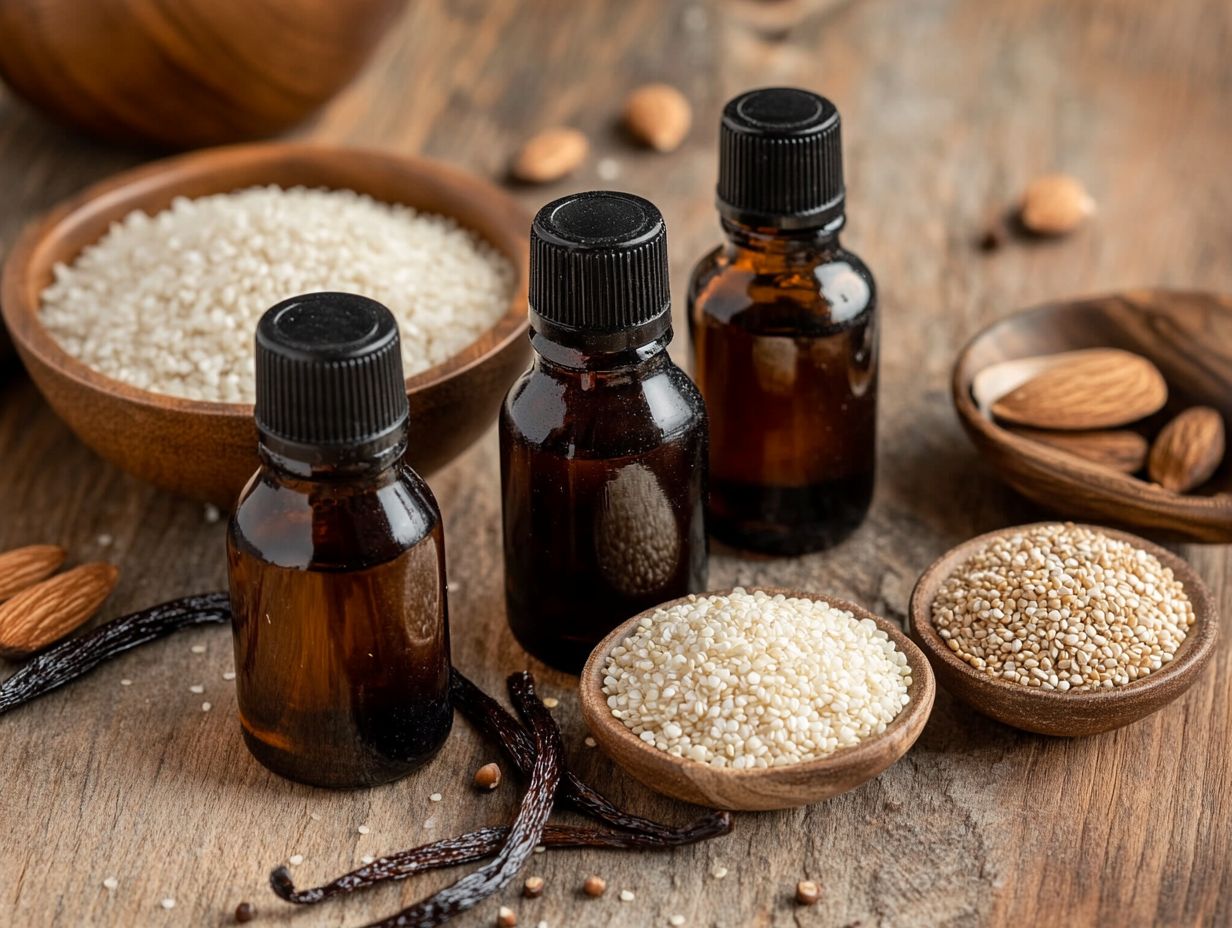
Common alternatives to grains that you might consider include a range of malt extracts, such as liquid malt extract (LME) and dry malt extract (DME). These extracts are highly regarded by both novice homebrewers and experienced extract makers alike. Additionally, companies like LD Carlson and Premier Malt Company produce high-quality malt extracts for both the homebrewing and commercial markets.
They serve as an excellent foundation for numerous extract recipes, streamlining the brewing process and enabling you to explore a variety of brewing techniques that produce different beer styles. You can blend malt extracts with specialty grains to enhance flavor complexity and improve your brewing results, potentially leading to GABF winners in the extract beer category.
How to Use Almond Flour as a Substitute for Grains
Almond flour is an exceptional substitute for grains in your culinary endeavors, offering a delightful nutty flavor and a moist texture, all while being gluten-free. When you choose to work with almond flour, it s important to grasp how it interacts with other ingredients to ensure your recipes turn out wonderfully. This versatility gives you the power to maintain high-quality ingredients while achieving the flavor and consistency you desire in your creations, much like malt syrup does in brewing.
To effectively integrate almond flour into your recipes, pay attention to proper ratios. Generally, when replacing wheat flour with almond flour, use about one cup of almond flour for every cup of wheat flour, but be sure to reduce the liquid by roughly 25%, as almond flour tends to be more absorbent. It can also be beneficial to add an extra egg for added structure, particularly in baked goods.
Whether you re crafting fluffy pancakes, moist muffins, or a savory breading for chicken or fish, this nutty flour elevates both texture and flavor, resulting in dishes that are not only healthier but also rich in satisfying tastes.
How to Use Coconut Flour as a Substitute for Grains
Coconut flour stands out as a popular alternative to traditional grains, celebrated for its absorbent properties and subtle sweetness, making it a top choice in gluten-free recipes. When you substitute coconut flour for grains, it s essential to consider its distinctive texture and moisture-absorbing qualities, as they can significantly impact the final result of your dishes, similar to how the extract brewing method impacts the final taste of beer wort.
This adaptability underscores the importance of recipe control, give the power toing you to use high-quality ingredients while experimenting with exciting new flavor profiles.
As you embark on your culinary journey with coconut flour, grasping its absorbent nature is crucial. Typically, for every cup of coconut flour, you ll want to add around four eggs or a similar source of moisture, like applesauce, to achieve that perfect balance in texture.
This versatile flour truly shines in baked goods such as pancakes, muffins, and bread, delivering a satisfyingly dense and flavorful experience. Nutritionally, coconut flour is a powerhouse, rich in fiber and healthy fats that promote gut health and sustainability, all while being low in carbohydrates. This makes it an excellent choice for those who are health-conscious and looking to elevate their cooking.
How to Use Oat Flour as a Substitute for Grains
Oat flour stands out as a nutritious and versatile alternative to traditional grains, presenting a mild flavor and a slightly gritty texture that elevates a range of recipes. When you opt for oat flour as a substitute, you’ll find it not only adds moisture to your baked goods but also serves as a commendable source of fiber. This characteristic makes it an invaluable ingredient for anyone focused on recipe control and the incorporation of high-quality ingredients into their meals, much like concentrated malt does in the brewing process.
To replace wheat flour effectively in your cooking, aim for a ratio of about 1:1, though you may need to tweak it depending on the specific dish. For example, in recipes like pancakes or muffins, you might need to increase the liquid slightly due to oat flour’s greater absorbency. Additionally, using extracts like liquid malt extract can provide unique flavors and textures.
Oat flour truly shines in cookie recipes, where its natural sweetness enhances the overall flavor profile, and it works wonderfully in savory dishes like breaded chicken, providing a delightful crunch. Its whole-grain nature brings significant nutritional benefits, including higher fiber content and essential vitamins, making it an excellent choice for those who prioritize health in their culinary endeavors. For brewing enthusiasts, oat flour can also be utilized in extract recipes for homebrewing.
How to Use Cassava Flour as a Substitute for Grains
Culinary Applications
Cassava flour stands out as an exceptional grain substitute, particularly cherished in gluten-free cooking for its neutral flavor and fine texture. You ll find that this flour can seamlessly replace wheat flour in countless recipes, providing a straightforward solution for those with dietary restrictions. By using cassava flour in your recipes, you maintain control over your dishes while ensuring satisfying results without compromising on taste or texture.
When you integrate cassava flour into your culinary repertoire, keep in mind that a 1:1 ratio is often effective when substituting it for traditional flours in recipes like cookies and pancakes. For baked goods that need more structure, such as bread, consider mixing 1 part cassava flour with 1 part almond or coconut flour for optimal results. This versatile flour works wonders in countless delicious dishes, from muffins and dumplings to a delightful coating for fried foods.
Nutritional Benefits
Beyond its culinary advantages, cassava flour is also rich in carbohydrates, providing an energizing boost. It s a fantastic source of dietary fiber, which supports digestion and promotes overall gut health. You can even get creative in the homebrewing market, where cassava flour can be an interesting addition to certain extract recipes.
How to Use Chickpea Flour as a Substitute for Grains
Culinary Applications
Chickpea flour, celebrated for its impressive high protein and fiber content, stands as a formidable substitute for grains in a myriad of recipes. It brings a delightful nutty flavor and a hearty texture to your culinary creations. This ingredient is particularly favored in gluten-free and vegetarian cooking, enabling you to craft nutritious and fulfilling dishes. You can also use chickpea flour in creative ways to make unique beer styles.
By incorporating chickpea flour into your meals, you gain greater control over your recipes while ensuring you use quality ingredients.
Its versatility truly shines in both baking and cooking, where it can seamlessly replace traditional flours at a 1:1 ratio just remember to adjust for moisture and binding. For instance, when whipping up pancakes, starting with equal parts chickpea flour and water or milk can result in a delicious, protein-packed foundation.
Nutritional Benefits
Dishes like socca, a savory chickpea flour pancake, or falafel, showcase the flour s unique qualities beautifully. Nutritionally, this flour not only enhances your meals with essential vitamins and minerals but also promotes satiety, making it an excellent choice if you’re aiming to maintain a balanced diet. By experimenting with chickpea flour, you can enjoy a delightful array of dishes while reaping significant health benefits.
Can Extracts Be Used in Place of Grains in Baking?
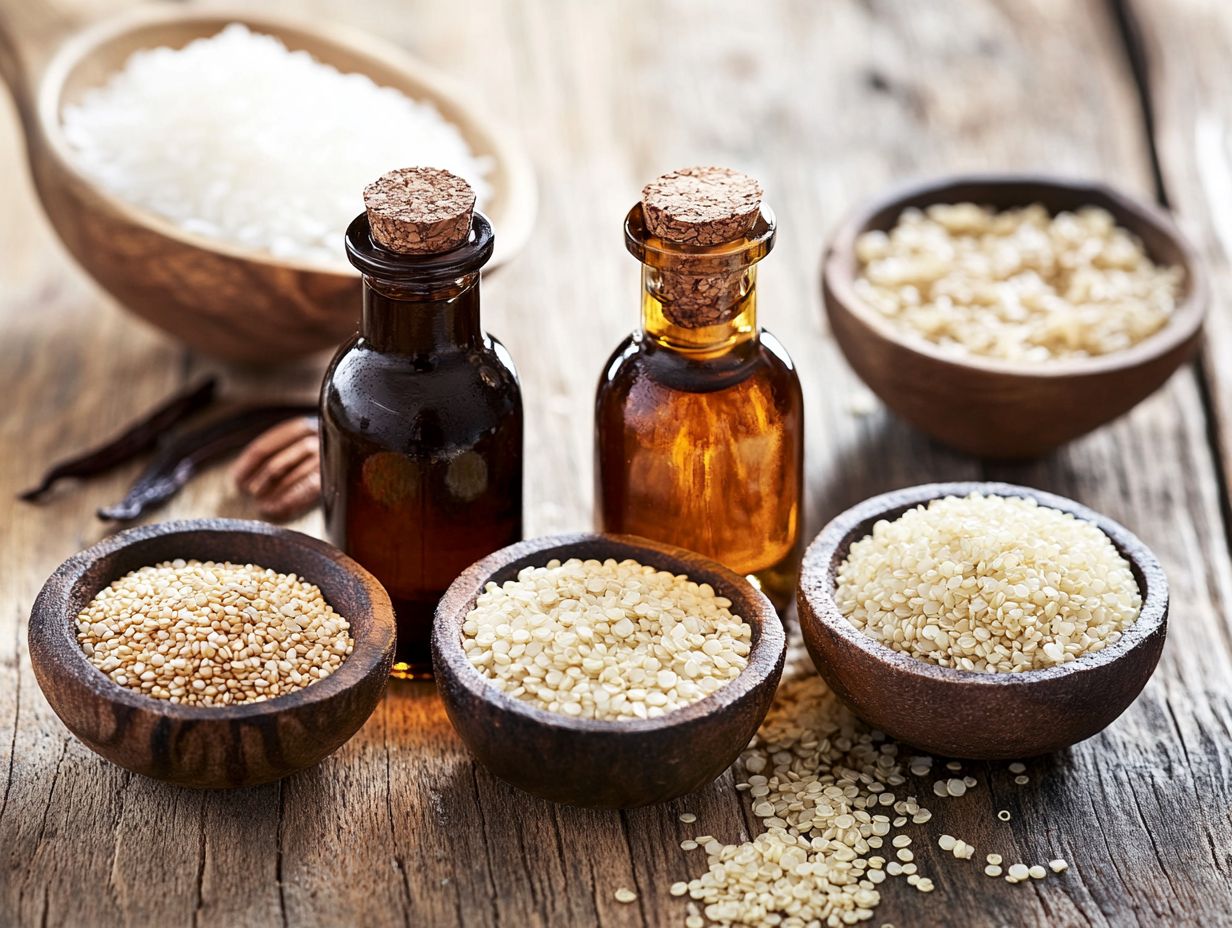
You can certainly use extracts as a substitute for grains in baking, providing both convenience and versatility as you craft delightful breads, cakes, and other treats. In the context of extract brewing, extracts allow for more recipe control and fermentability adjustments, ensuring a high-quality end product.
By replacing traditional grains with extracts like malt extract, you can achieve rich flavors and satisfying textures while streamlining your ingredient list. This method not only enhances your control over recipes but also invites experimentation, allowing you to maintain high-quality ingredients throughout your baking journey. Extracts like dry malt extract and malt syrup are popular among extract makers and homebrewing enthusiasts for their consistency and ease of use.
What Are Some Tips for Baking with Extracts Instead of Grains?
When you choose to bake with extracts instead of grains, a few essential tips can help you achieve remarkable results. These tips ensure your baked goods boast the best flavor and texture.
It s vital to understand the unique properties of each extract. For example, using liquid malt extract might necessitate some tweaks to the liquid ratios in your recipe to achieve that perfect consistency. Brewing techniques, such as proper hop schedules and the fermentation process, can further enhance the final product.
Proper storage and handling of extracts is crucial, as it helps preserve their quality and flavor profile, enhancing your overall baking experience.
To seamlessly incorporate these extracts, keep the substitution ratios in mind. Typically, one tablespoon of extract can replace about one cup of sugar, adding both sweetness and depth of flavor. You ll love how experimenting with different flavors balances fruity extracts with savory elements, truly elevating the taste of your creations.
In homebrewing, this balance is often achieved through careful hop additions and thoughtful use of specialty grains.
Since extracts are often highly concentrated, be careful when measuring to prevent them from overpowering the other ingredients.
Storing your extracts in a cool, dark place is also beneficial, as it helps prevent degradation. By thoughtfully adjusting these components, you can create exquisitely refined treats that are sure to delight the palate.
Whether you’re a fan of homebrewing or commercial products from breweries, proper storage is key to maintaining quality.
Are There Any Health Benefits to Using Extracts Instead of Grains?
Opting for extracts instead of grains can provide a wealth of health benefits, particularly for those adhering to specific dietary restrictions or preferences, such as gluten-free diets.
In the world of homebrewing, using extracts allows for a more controlled and consistent brewing process, making it ideal for beginners and seasoned brewers alike.
Many extracts, like almond or coconut flour, serve as nutritious alternatives, rich in essential nutrients, healthy fats, and fiber, which can elevate the nutritional profile of your meals.
This strategy offers greater flexibility in meal planning while keeping high-quality ingredients at the center of your diet, ultimately supporting your overall well-being.
Extracts like malt syrup from reputable extract makers such as LD Carlson and Premier Malt Company ensure that you get the best results in both cooking and brewing.
How Do Extracts Affect Blood Sugar Levels?
Extracts can significantly influence your blood sugar levels, often offering a more stable alternative to traditional grains that can cause those dreaded spikes due to their carbohydrate content.
Many extracts, like almond flour, boast a lower glycemic index. This means they lead to slower and more gradual increases in blood sugar. This quality is especially advantageous for anyone managing their blood sugar or striving to maintain a healthy diet.
In homebrewing, using extracts can help produce award-winning beers with balanced flavors and stable fermentability.
Incorporating these extracts into your meals can enhance your nutritional profile, as they are typically rich in essential vitamins, minerals, and healthy fats that traditional grains might lack. For example, coconut flour and quinoa shine not only for their ability to help control blood sugar levels, but also for their added fiber, which supports digestive health.
By prioritizing extracts with lower glycemic indices, you can better regulate your energy levels throughout the day, minimizing cravings and promoting overall health. This gradual release of energy boosts your physical performance and enhances your focus and concentration, creating a win-win situation for anyone looking to optimize their diet.
Summary: Baking with extracts offers numerous benefits, from improved flavor and texture to health advantages such as better blood sugar control. Always store extracts properly and experiment with different flavors to enhance your creations.
Are you ready to try baking with extracts? Share your experiences and favorite recipes!
Can Extracts Aid in Weight Loss?
Incorporating extracts into your diet can be a game-changer for weight loss. Many of these options are lower in carbohydrates and calories compared to traditional grains.
Take almond and coconut flour, for example; they are nutrient-dense choices that offer healthy fats and protein, helping you feel fuller and reducing the chances of overeating. You can enjoy delicious meals while focusing on the nutritional value and quality ingredients.
In homebrewing, extracts can streamline the brewing process, helping you manage brewing costs while producing quality ingredients.
Beyond their reduced caloric content, extracts are often brimming with vitamins, minerals, and antioxidants that support your overall health. This makes them an attractive alternative for anyone looking to cut calories without compromising essential nutrients.
Extracts are also pivotal in extract brewing, a method of brewing that uses concentrated extracts instead of whole grains, used by both commercial breweries and homebrew clubs, ensuring a consistent and quality brew.
When you re thinking about how to introduce these extracts into your meals, don t hesitate to experiment. Try swapping out grains in your baking or using them as a foundation for smoothies.
Combining extracts with lean proteins and non-starchy vegetables not only creates a balanced meal but also amps up your satisfaction.
Ultimately, these dietary adjustments can pave the way for effective long-term weight management while encouraging a more varied and nutritious eating pattern.
Are Extracts Gluten-Free?
Many extracts are naturally gluten-free, making them an excellent alternative for those navigating celiac disease or gluten sensitivity. Options like almond flour and coconut flour not only cater to gluten-free diets but also offer a delightful array of nutritional benefits and flavors.
In the homebrewing market, gluten-free extracts are becoming increasingly popular, allowing everyone to enjoy the art of brewing.
By understanding which extracts are gluten-free, you can maintain your dietary restrictions while enjoying a vast spectrum of recipes and flavors, all without sacrificing the quality of your ingredients.
Take vanilla extract, for example. Derived from real vanilla beans, it s not just gluten-free; it s also packed with antioxidants that elevate both the flavor and the nutritional profile of your dishes.
Extracts like peppermint and almond lend a delightful zest to an array of desserts, from gluten-free brownies to cakes, making them perfect for anyone needing to steer clear of gluten.
Discover these amazing gluten-free extracts that effortlessly enhance your meals! These include concentrated malt and malt syrup, which can be seamlessly incorporated into smoothies, baked goods, and even salad dressings, infusing your creations with beneficial properties alongside mouthwatering tastes.
By exploring the diverse world of gluten-free extracts, you can craft satisfying meals that align perfectly with your dietary needs while remaining enjoyable and wholesome. Extract brewing provides a straightforward way to start homebrewing, allowing you to experiment with various brewing techniques and methods.
Frequently Asked Questions about Extract Brewing
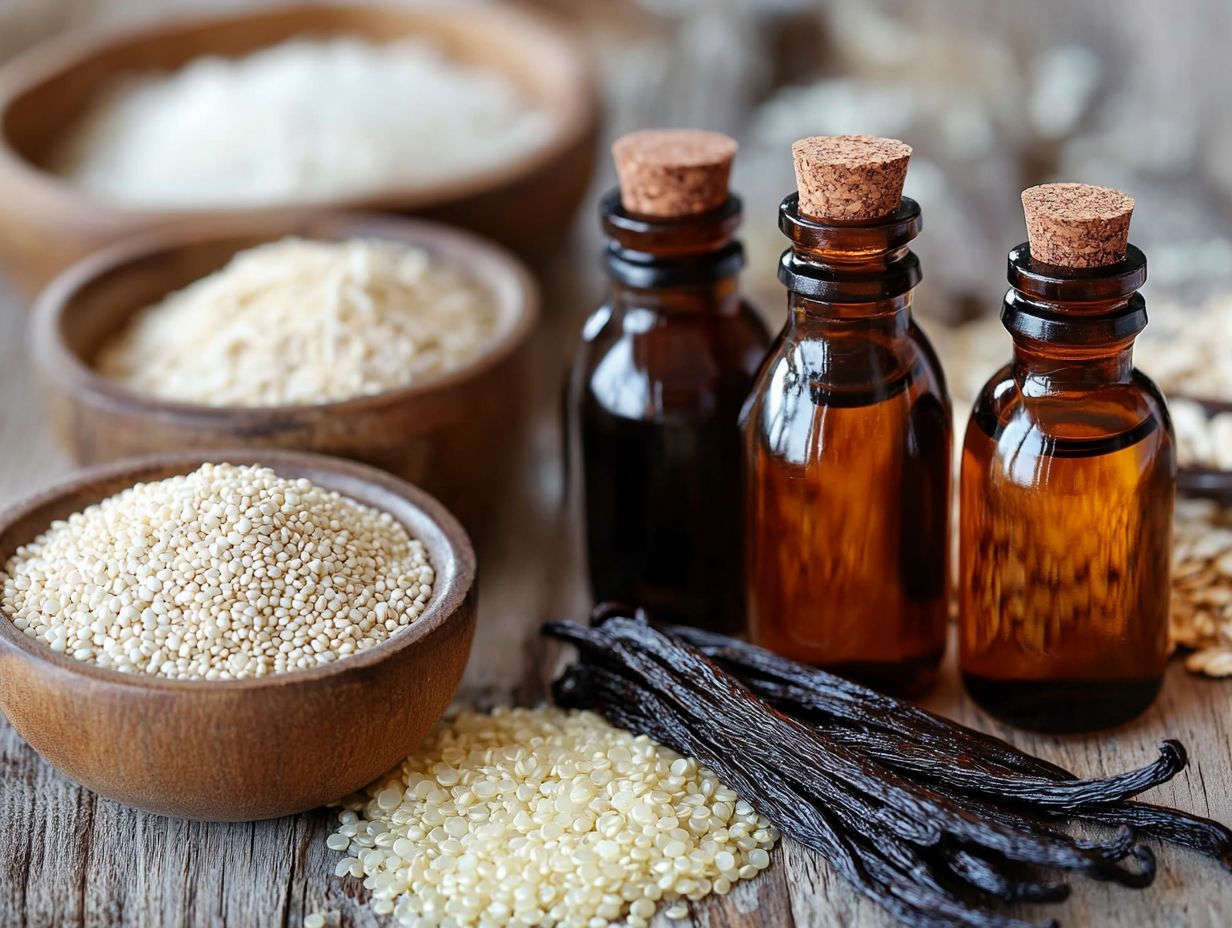
Can I Use Extracts Instead of Grains in Brewing?
Yes, extracts can be used as a substitute for grains in certain recipes, and they are also popular in homebrewing for creating extract beers.
What are extracts in Brewing?
Extracts refer to concentrated flavorings derived from natural ingredients such as fruits, herbs, and spices. In the context of brewing, extracts can include liquid malt extract and dry malt extract, which are used to simplify the brewing process.
Why would I want to use extracts instead of grains in Brewing?
Extracts offer a more convenient and efficient way to add flavor to dishes, as they are already in a concentrated form and do not need to be cooked or processed like grains. This is particularly beneficial in extract brewing, where liquid or dry malt extracts replace the need for malted barley and reduce brewing costs.
Can extracts be used in all recipes that call for grains in Brewing?
No, extracts may not work well in recipes that require the texture or bulk provided by grains. It is best to consult a recipe or cooking expert for guidance on substitutions.
Extract recipes might not achieve the same body and mouthfeel as all-grain brewing. However, they offer simplicity and lower brewing costs, making them an appealing option.
Do I need to use the same amount of extract as I would grains in Brewing?
No, extracts are typically much more concentrated than grains. You will need to adjust the amount used accordingly.
Start with a small amount and add more to taste. Accurate adjustments for how much sugar the yeast can eat and control over the hop schedule are crucial for achieving the desired flavor profile.
Are there different types of extracts I can use in Brewing?
Yes, various types of extracts are available, including vanilla, almond, peppermint, and more. You can also explore different types of malt extract, such as liquid malt extract and dry malt extract.
Get creative and experiment with exciting flavors to find the ones you like best. Consider joining a homebrew club to share your brewing experience!

